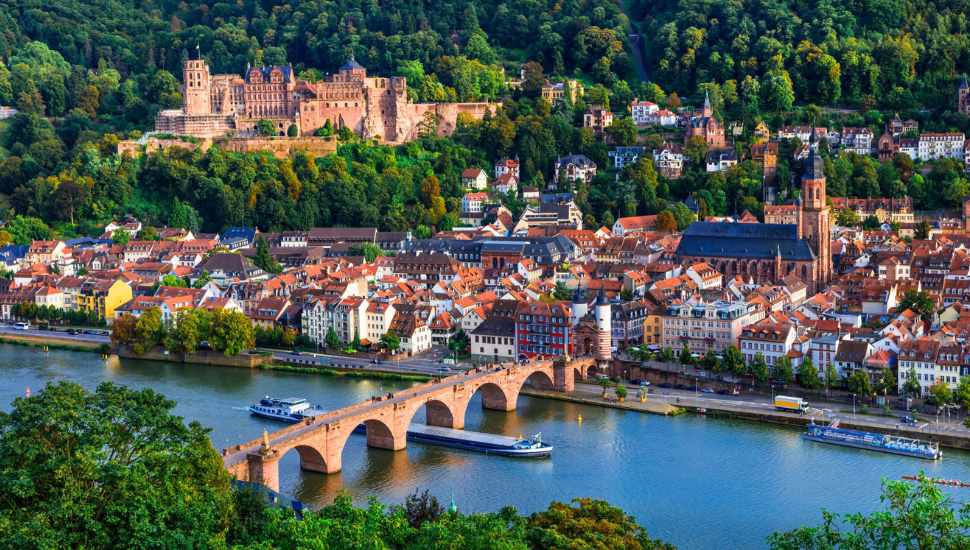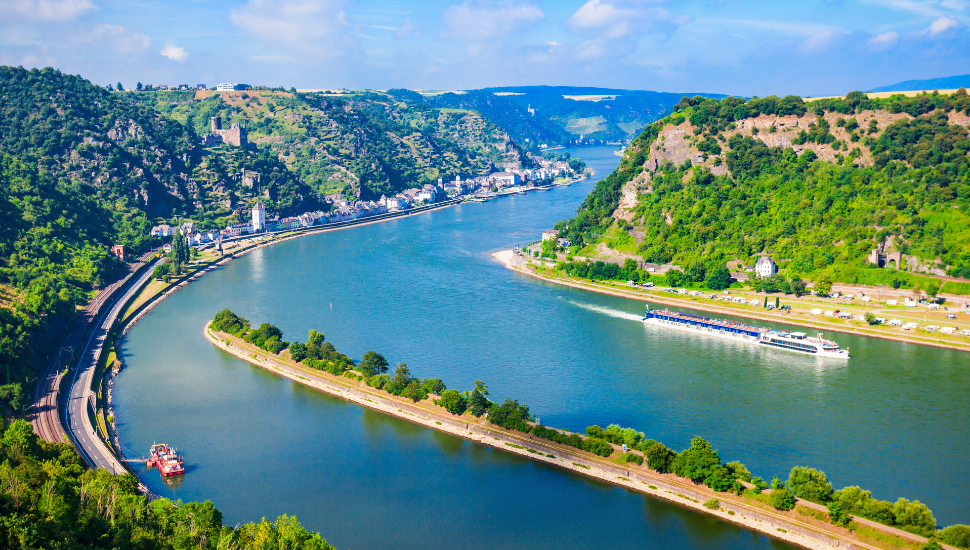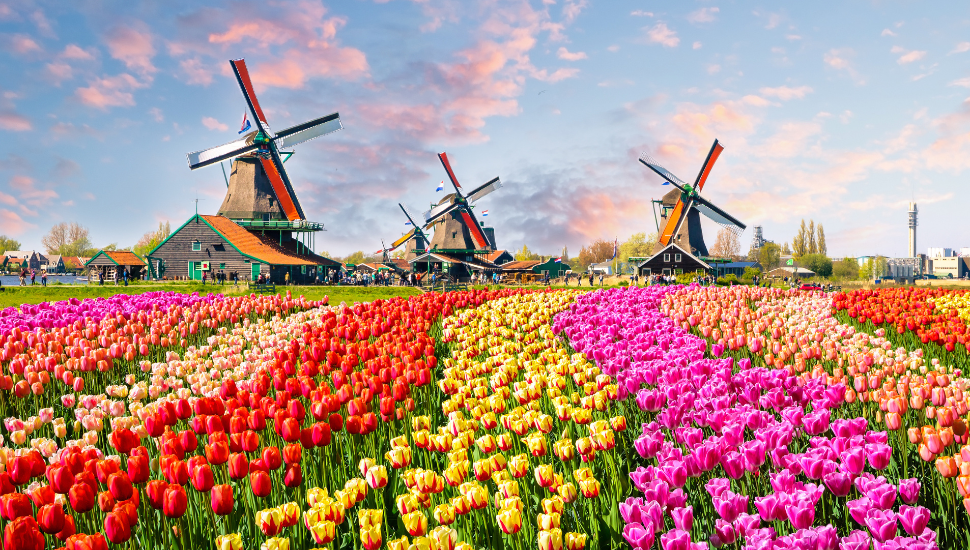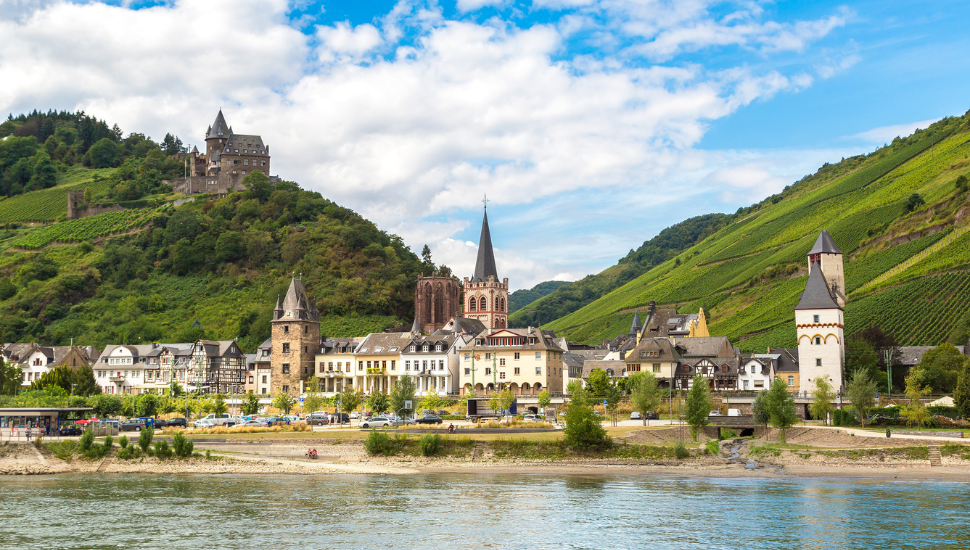Rhine River Cruises: Your Complete Guide
All you need to know about booking a cruise on the Rhine
A cruise on the majestic Rhine takes you through the heart of Europe in comfort— and at a leisurely pace.
Enjoy stunning views of castles, ancient towns, and rolling vineyards, and excursions to cities like Strasbourg, Koblenz, Cologne, and Amsterdam.
Here's our guide to booking the perfect Rhine cruise getaway for 2024 or 2025.
Why is the Rhine so popular for cruises?
The mighty Rhine is one of Europe's major rivers, extending 1,230km from the Swiss Alps to the North Sea.
Thanks to its length and depth, the Rhine is able to accommodate medium-sized ships - making it ideal for river cruises.
Add the fact it connects some of Europe's most exciting and historic cities, and it's little wonder it has become a leading waterway for cruises on the continent—rivalled only by the Danube.
What cities are on the Rhine?
A number of prominent cities are situated on the Rhine, including Basel, Arnhem, Strasbourg, Düsseldorf, Cologne, and Rotterdam. But many more cities are a short distance from the river, which is why many cruises include excursions to cities like Amsterdam and Antwerp.
The Rhine is connected to the Danube by the Rhine-Main-Danube Canal. This means it's possible to sail from the North Sea to the Black Sea - although the vast majority of river cruises focus on the Rhine or the Danube, or sections of both.
Other cruises are based around the Rhine and the Moselle River, which passes through the majestic Vosges mountains of northeastern France.

What are the options for Rhine cruises?
A number of companies operate cruises along the Rhine and its connected waterways.
Each cruise has its own theme, with names like "Castles and Cathedrals" or "Rhine and Main Explorer".
Cruises last between 10 and 15 days, depending on the distance and waterways covered.
What does the classic Rhine cruise look like?
The quintessential Rhine cruise starts in Basel, Switzerland, then sails in a roughly northerly direction through France, Germany, Liechtenstein, and the Netherlands - ending in Amsterdam.
Alternatively, you can travel in the opposite direction.
Christmas markets and the tulip season
While many cruises take advantage of the warmer weather of late spring, summer, and early autumn, others focus on particular times of the year, such as Christmas cruises - which enable passengers to enjoy festive markets - and the tulip season cruises, which offer ringside views of the tulip fields of the Netherlands and Belgium.
Top Rhine cruise destinations
Basel, Switzerland
Basel is the starting point for many Rhine cruises.
This historic city is the gateway to the Swiss Rhineland, where the languages and cultures of Switzerland, Germany and France have fused together.
Breisach, Germany
Magical Breisach affords access to the fabled Black Forest region, with its vineyards, historic cathedrals, and quaint villages.
Strasbourg, France
Strasbourg is the cultural capital of the Alsace region, and is the largest port on the Upper Rhine. Its proximity to Germany means there's a unique mix of cultural influences.
Its wonderfully preserved Old Town is not to be missed!

Middle Rhine
The UNESCO-listed Middle Rhine flows through some of Germany's most scenic landscapes, passing rolling vineyards, mighty castles, and the Lorelei Rock, which watches over a dramatic bend in the river.
Cologne
Cologne's mighty cathedral dominates the city's skyline - but there's much more to Germany's fourth biggest city.
Other big draws include its historic Old Town, Museum Ludwig, and the Lindt Chocolate Museum!

Amsterdam
The Dutch capital is famed for its network of canals, cobbled streets, and for some of Europe's most popular museums and galleries - including the Anne Frank House and the Van Gogh Museum.
What is the best month to take a Rhine river cruise?
For the best weather, aim for April to early June, or September to early October. July and August can be extremely hot, and popular destinations crowded.
November and December are also popular months - with many cruises stopping off at some of the spectacular Christmas markets held in towns and cities along the Rhine. However, it goes without saying that a winter cruise on the Rhine can be chilly!
Is it safe to take a Rhine River cruise?
According to Travel Weekly, river cruising is statistically even safer than flying - which is one of the safest modes of transport. Additionally, many cruise lines have medical centres on board, meaning passengers will get the attention they need if they fall ill or get injured.
What's better: The Rhine or the Danube?
The Rhine and the Danube have long been rivals in the realm of European river cruises. The Danube offers more rural vistas, passing through the Bavarian Forest and the idyllic Wachau Valley. The Rhine can be busier, but also features fabulous rural vistas, as well as castles, cathedrals. Last but not least, it bypasses some of Europe's most exciting and historic cities.
Which side of the ship is better for a Rhine cruise?
Given the wide array of castles, towns, and vineyards on the Rhine, there is no "better" side to book your cabin. Besides, you'll be able to look both left and right when out on the deck or in communal areas of the ship.
Is it worth getting a balcony cabin?
There's no doubt that being able to sit on your own balcony as you pass the banks of the Rhine is an attractive idea, some argue that it's not the best option. This is because river cruise ships are subject to a width limit, which means having a balcony means less cabin space. So if having a spacious cabin is a must, consider booking one without a balcony.
What happens if the Rhine's water levels fall?
Rhine cruise ships are built with very shallow drafts, which means they are able to navigate the river even if water levels fall (due to lack of rainfall).
Can you feel the ship move on a Rhine river cruise?
Unlike an ocean-going cruise ship, which can be impacted by rough seas and high winds, Rhine river cruise ships remain stable, since the Rhine is a calm river and even a storm is unlikely to cause any unpleasant movement.
A Rhine river cruise could be a great option for those who suffer from seasickness.

What is the prettiest part of the Rhine River?
While the Rhine boasts many superb views, most agree that the Upper-Middle Rhine Valley, between Koblenz and Bingen, is the prettiest part of the river.
What's the dress code for Rhine river cruises?
Most river cruise companies encourage casual wear for the daytime - shorts or light trousers for warmer weather, and jeans, jumpers, and jackets if it's cooler. Some cruise companies prefer guests to dress 'smart casual' for dinner. For some events, such as 'the Captain's dinner' or similar, guests may even dress in gowns and jackets.
‘Active’ vs ‘Classic’ Rhine cruises: What’s the difference?
In recent years some cruise companies have drawn a distinction between ‘active’ and ‘classic’ (traditional) cruises. Active cruises are designed for those seeking a more physically adventurous holiday, while classic cruises are better suited to those with less mobility.
Be sure to read any cruise itinerary carefully - especially if you or a loved one has mobility issues.
Get a Quote